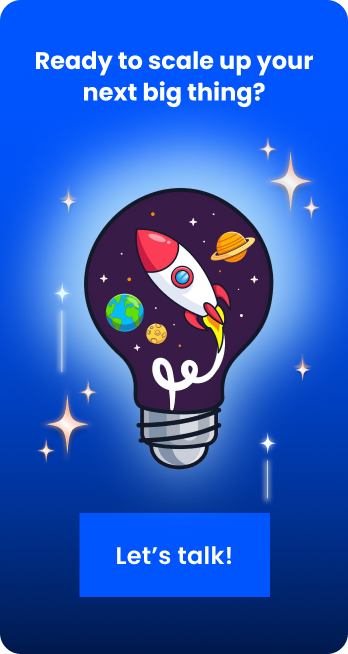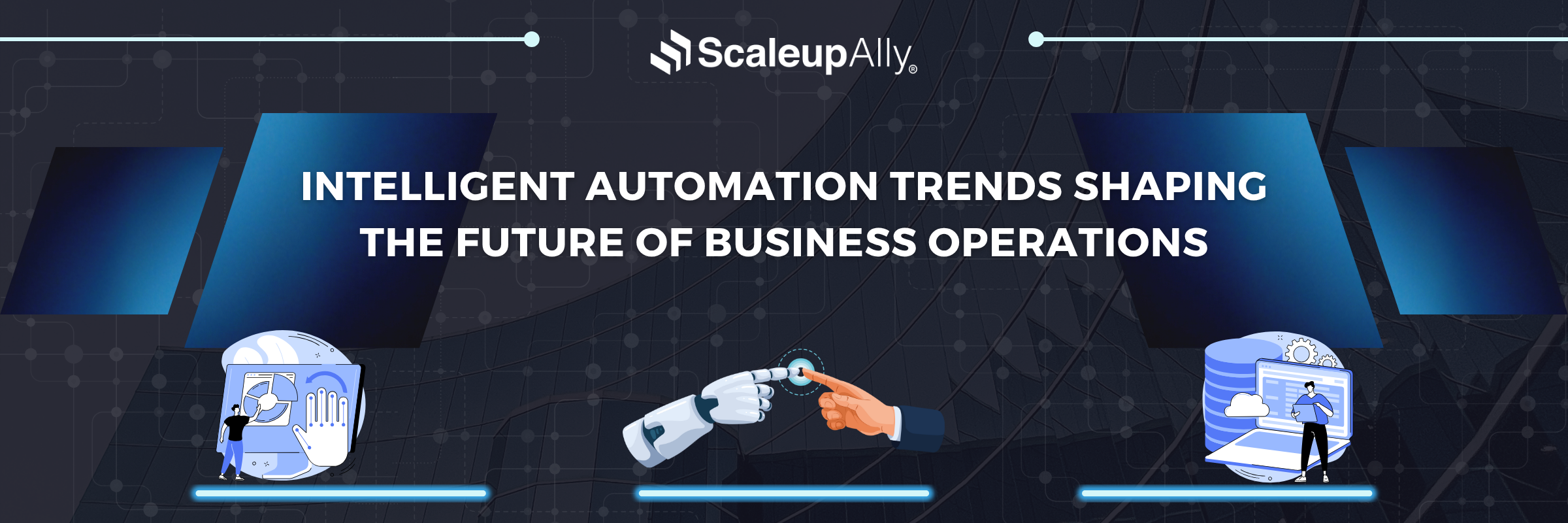
Intelligent Automation Trends Shaping The Future of Business Operations
Manu Jain | July 31, 2025 , 10 min read
Table Of Content
An estimated 80% of companies are set to adopt intelligent automation by 2025, for the sole reason that companies need systems that think, learn, and adapt.
Presently, 26% of organizations have developed the capabilities to realize measurable value from AI adoption. The result? Smarter operations that cut costs while boosting performance across every industry sector.
The 16 intelligent automation trends explored in this blog are what’s shaping 2025. They cover hyper automation, AI, low-code tools, process mining, enterprise adoption, and many more.
Key Takeaways
- Systems are now making decisions independently rather than merely following scripts, with 15% of business decisions becoming fully automated by 2028
- Intelligent automation spending will hit $1+ trillion by 2026, driven by hyperautomation and AI integration across all business functions
- Low-code platforms let business users build automation without IT, with 70% of new apps using these tools by 2025
- 90% of large enterprises already use hyperautomation as standard practice, achieving 30-50% efficiency gains and up to 1,800% ROI
- 95% of routine processes will be fully automated, creating “intelligent enterprises” where humans and AI collaborate rather than compete
Top 16 Intelligent Automation Trends to Watch Out in 2025

Below, we have compiled 16 trends in intelligent automation that will redefine how work is done in 2025.
1. Enterprise agentic AI will transform traditional automation
Agentic AI systems think, plan, and execute independently. They autonomously plan strategies, execute complex tasks, and adapt when things go sideways without human intervention.
Gartner projects that AI software spending will reach $297.9 billion by 2027. In this, Generative AI spending alone will reach $644 billion in 2025. That’s 76.4% growth in a single year.
By 2028, 15% of day-to-day work decisions will happen without human input. By then, 33% of enterprise software applications will include agentic AI.
Microsoft experimented with the concept with Lumen Technologies. Sales prep time dropped from 4 hours to 15 minutes per seller. The projected savings are $50 million annually.
2. Hyperautomation reaches trillion-dollar market maturity
Gartner puts the hyperautomation-enabling software market at $1.04 trillion by 2026. This is such a massive number. Also, 90% of large enterprises now use hyperautomation as standard practice.
Using Hyperautomation, Piraeus Bank cut loan application processing from 35 minutes to 5 minutes.
3. Process mining becomes essential for intelligent operations
You can’t fix what you can’t see. But with process mining, these invincible challenges get fixed. This technology reads event logs from your systems and shows you exactly how work really happens, how it flows through your organization. The gaps, bottlenecks, and hidden inefficiencies become visible.
The market explosion reflects the demand. Straits Research forecasts growth from $1.96 billion in 2025 to $71.41 billion by 2033. Markets and Markets expects 45.6% annual growth through 2028.
Meanwhile, 93% of organizations want to apply process mining, but 79% have never used it. The ones who do get it see results.
4. AI-powered document processing reaches enterprise scale
Remember when processing invoices, contracts, and claims required teams of people glancing at documents? Intelligent Document Processing has just automated that entire job category. This is different from OCR if you’re thinking it. These systems understand context, extract meaning, and trigger business actions automatically.
The market projections vary wildly, but they’re all huge. Fortune Business Insights sees growth from $7.89 billion in 2024 to $66.68 billion by 2032. Grand View Research forecasts $2.3 billion in 2024 to $12.35 billion by 2030. Different methodologies, but the conclusion is that this is reshaping document-heavy industries.
According to Gartner, 50% of B2B invoices globally will be automated by 2025.
5. Decision intelligence enables autonomous business operations
Decision Intelligence platforms combine data analytics, AI modeling, and business rules to automate end-to-end decisions. They design decision workflows, engineer models, and orchestrate autonomous choices while keeping humans in the loop for complex scenarios.
Fortune Business Insights projects market growth from $16.79 billion in 2024 to $57.75 billion by 2032. IDC predicts that by 2027, enterprise leaders will replace homegrown decision solutions with commercial DI platforms, accelerating decision velocity by 2x.
6. Low-code platforms democratize automation development
IT backlogs were once the graveyard of innovation — but low-code platforms have changed that. This technology enables business users to build applications without coding. Now, IT teams deliver solutions in weeks instead of months.
Gartner forecasts the global low-code market at $26.9 billion in 2023 with 19.6% growth. Forrester’s accelerated scenario suggests that the market could hit $50 billion by 2028 if AI adoption accelerates development.
Pacific Gas & Electric built over 300 applications using Microsoft Power Platform. The result? $75 million in annual savings.
7. Citizen development transforms organizational capabilities
Business users got tired of waiting for IT, so they started building solutions themselves. Citizen development empowers non-technical workers to create automation using visual, intuitive environments. No computer science degree required. No coding bootcamp needed. Just drag, drop, and deploy.
Gartner research shows that by 2026, 80% of low-code users will come from non-IT departments, up from 60% in 2021. 41% of non-IT employees currently customize or build tech solutions.
Organizations with mature citizen development achieve significantly higher innovation scores. They show twice the likelihood of successful digital transformation.
8. Automation Centers of Excellence scale transformation
Automation without governance will cause a lot of chaos. However, Automation Centers of Excellence will bring order. These centers establish standards, best practices, and coordination frameworks.
74% of business leaders had an active automation CoE in 2023, up from 54% in 2021. By 2024, over 70% of large global enterprises will have 70+ concurrent hyperautomation initiatives. Organizations with automation CoEs report drastically reduced costs in complex processes and higher success rates.
9. Workflow orchestration integrates complex business processes
Workflow orchestration automates and coordinates complex procedures across systems. They handle workflows, data flows, and interactions to achieve business targets.
Business Research Insights projects market growth from $34.04 billion in 2024 to $93.41 billion by 2033. Verified Market Research forecasts $57.22 billion in 2024 to $292.84 billion by 2031—that’s 22.64% annual growth.
The results speak louder than projections. Up to 70% reduction in process errors. 7% increase in customer satisfaction levels. Manufacturing companies achieve end-to-end process coordination with automated quality control.
30% of enterprises will automate more than 50% of network activities by 2026. That’s wholesale transformation of how work gets done.
10. Cognitive automation advances beyond rule-based systems
These AI systems interpret unstructured data, understand natural language, and adapt responses based on changing conditions.
Just like Gartner, McKinsey also projects that up to 30% of current work hours could be automated by 2030. Demand for technological skills could grow by 25% in Europe and 29% in the United States by 2030. Gartner forecasts that by 2029, agentic AI will autonomously resolve 80% of common customer service issues without human intervention.
11. RPA evolves into intelligent process agents
Remember when RPA bots could only click buttons and copy data? They are getting better now. Modern RPA combines traditional automation with AI-powered intelligence. These are intelligent agents that handle unstructured data and complex decisions.
Fortune Business Insights projects global RPA market growth from $22.58 billion in 2025 to $72.64 billion by 2032. UiPath completed automation for 65% of Fortune 500 companies, handling millions of repetitive tasks.
Blue Prism Enterprise AI combines RPA with AI-powered automation and orchestration tools, while Automation Anywhere’s AI-based platform accelerated global adoption. The evolution goes beyond simple automation to comprehensive process intelligence that includes machine learning, natural language processing, and predictive analytics.
12. Cloud-native platforms enable scalable automation
Cloud-native automation platforms encompass containerization, Kubernetes orchestration, DevOps automation, and serverless computing to enable scalable, portable, and efficient application deployment. This trend includes Infrastructure as Code (IaC), GitOps, and AI-integrated development workflows.
Nutanix ECI 2024 reports that 90% of organizations have at least some containerized applications. Gartner projects end-user spending on cloud services will grow from $595.7 billion in 2024 to $723.4 billion in 2025 (21.5% increase). 41% of Kubernetes adopters are building most new applications on cloud-native platforms, projected to reach 80% within 5 years.
13. Security automation responds to evolving threats
Cyber threats move at machine speed, and human response times are not fast enough. We need a better solution.
Security automation integrates AI, machine learning, and orchestration platforms to detect, assess, and respond to threats without manual intervention. This includes SOAR platforms, AI-driven threat detection, and autonomous incident response. The cyber battlefield operates at the speed of algorithms now.
Gartner forecasts global security spending of $212 billion in 2025, 15.1% increase from 2024. The combined CASB and CWPP market is reaching $8.7 billion in 2025.
What needs our attention is that Gartner predicts 17% of total cyberattacks will involve generative AI by 2027.
84% of UK businesses get hit by phishing attacks, driving automated email security adoption. India experienced 370 million malware attacks in 2024.
14. ESG automation drives sustainable compliance
AI, machine learning, and big data analytics streamline environmental, social, and governance data collection, risk assessment, compliance monitoring, and predictive analysis. The green transition runs on intelligent automation now.
Straits Research projects global ESG software market growth from $1.92 billion in 2024 to $5.54 billion by 2033. Also, China’s ESG investment is expected to reach RMB 20-30 trillion by 2025.
The EU’s Corporate Sustainability Reporting Directive is driving automated ESG reporting platforms. Planted secured €5M for AI-driven ESG software automating data extraction with 75% time savings.
15. Governance automation scales regulatory compliance
Compliance used to require armies of lawyers and auditors. RegTech and AI governance automate the entire compliance function.
AI, machine learning, blockchain, and cloud computing automate compliance processes, risk management, and regulatory reporting. Specialized AI governance tools manage model integrity, bias detection, and responsible AI deployment.
Fortune Business Insights projects RegTech market growth from $15.80 billion in 2024 to $82.77 billion by 2032—22.8% annual growth. Forrester forecasts AI governance software at 30% annual growth from 2024-2030, reaching $15.8 billion by 2030.
Anti-money laundering systems provide real-time transaction monitoring and automatic reporting. KYC automation uses biometric and AI-powered identity verification, cutting onboarding time. Banks spend $270 billion yearly on compliance management, driving RPA adoption for regulatory reporting.
16. Conversational AI transforms customer interactions
Chatbots used to be frustrating. Multimodal conversational automation just became your best customer service rep.
These systems integrate voice, text, and visual interfaces for comprehensive automation. They handle complex, context-aware conversations with natural language understanding. Not scripted responses, but actual understanding.
MarketsandMarkets projects conversational AI market growth from $13.2 billion in 2024 to $49.9 billion by 2030. McKinsey anticipates AI assistants will automate 70% of customer service tasks by 2026.
Conclusion
The intelligent automation revolution isn’t waiting. 80% of companies will adopt these technologies by 2025. If you are an early adopter, you’ll capture a competitive advantage through 30-50% efficiency gains and exponential ROI improvements.
Organizations that act now will lead the transformation — those that delay risk falling behind.
Contact us today to discover which intelligent automation trends can transform your business operations.
Frequently Asked Questions
Q: What is the future of intelligent automation?
By 2030, machines will handle 95% of routine work and make 15% of business decisions solo. Humans shift to strategy and creativity.
Q: Which industries benefit the most from intelligent automation?
Banking and finance grab 30%, but healthcare, manufacturing, and retail aren’t far behind. These sectors see massive wins—30-50% efficiency boosts through smarter processes and automated customer service.
Q: Is intelligent automation replacing human jobs?
It’s changing jobs, not eliminating them. 30% of current work gets automated by 2030, but tech skill demand jumps 25-29%. New roles emerge in AI management and automation oversight.
Q: What are the top tools used for intelligent automation?
UiPath and Blue Prism dominate RPA. Microsoft Power Platform rules low-code. ServiceNow handles workflows. IBM, Salesforce, and Automation Anywhere offer full-stack solutions for enterprise needs.
Related Blogs
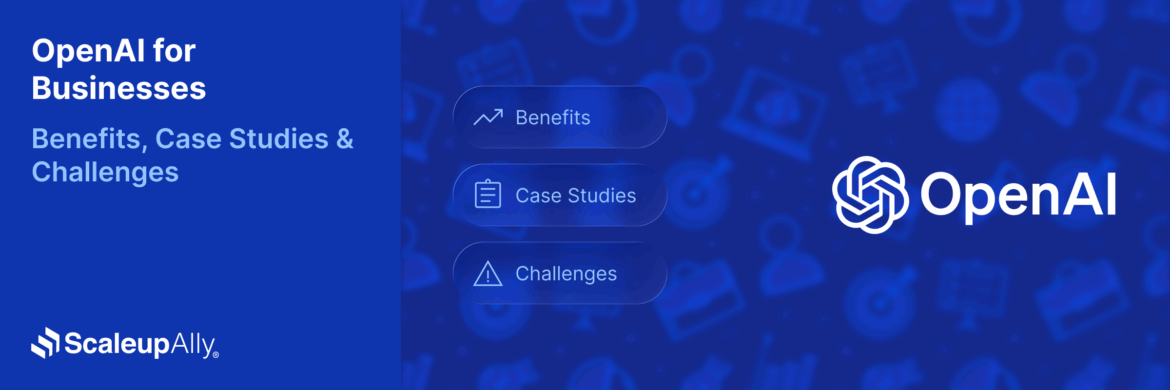
OpenAI for Businesses [Benefits, Use Cases & Challenges]
Discover the benefits of OpenAI for businesses. From reducing costs to scaling operations and enriching customer experiences. Real-world use cases included.
ScaleupAlly Team
Dec 16 ,
11 min read
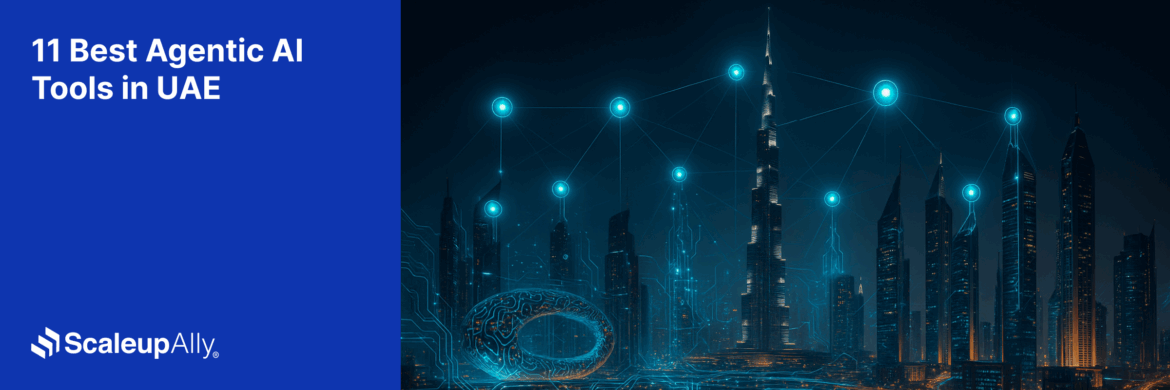
Best 11 Agentic AI Tools in UAE: Accelerating Digital Transformation
Discover the top 11 agentic AI tools in UAE for 2025. Explore features, benefits, and tips to choose the right AI tool for your business growth.
Manu Jain
Nov 6 ,
9 min read
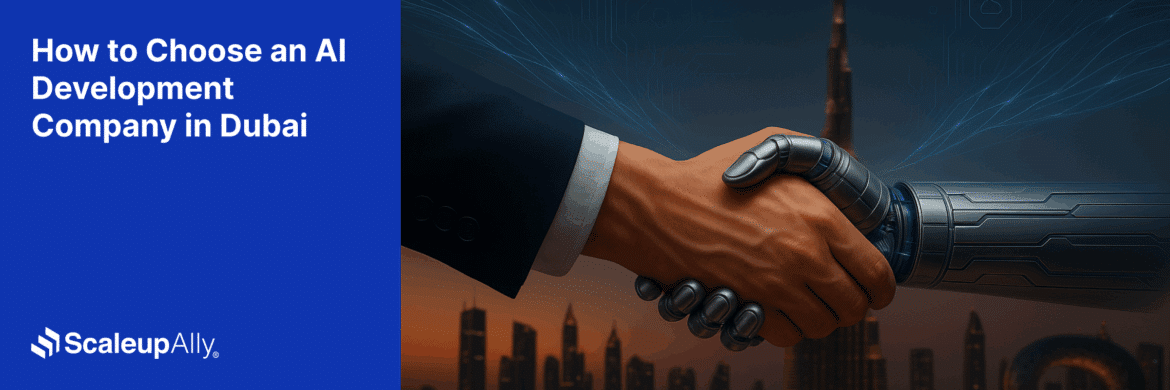
How to Choose an AI Development Company in Dubai: A Complete Guide
Find out how to choose the right AI development company in Dubai. Learn key factors, local considerations, and tips to select the best partner.
Manu Jain
Nov 6 ,
9 min read
